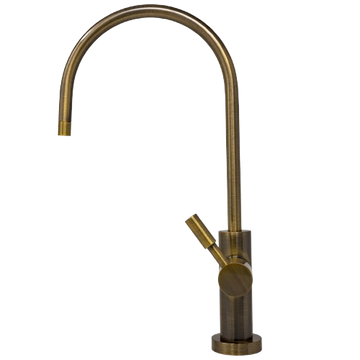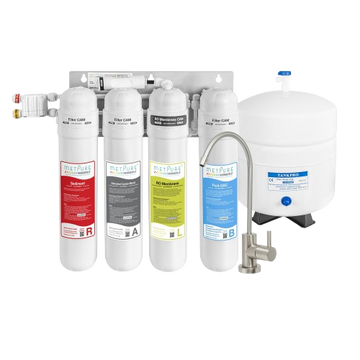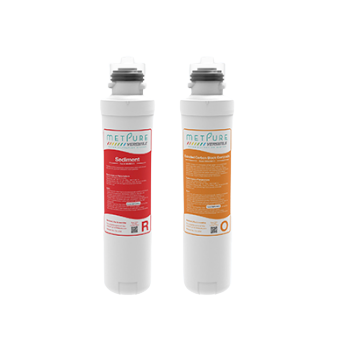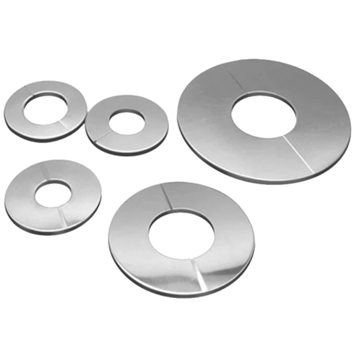When it comes to faucets, the finish is more than just a superficial detail — it's a crucial design element that can significantly impact the overall look and feel of your space. Imagine your faucet as the finishing touch to your kitchen or bathroom ensemble; its finish plays a starring role in this aesthetic presentation.
In this article, we cover all the advantages and disadvantages of the popular finishes and what considerations you need to keep in mind when choosing bathroom faucet finishes!
Check out: Different Types of Faucets & Their Features
Factors to Consider Before Choosing a Faucet Finish
Selecting the perfect bathroom faucet finish involves careful consideration of several factors to ensure it not only looks great but also functions well in your space.
Let's look at some key factors:
- Style Harmony: Your chosen finish should harmonize with the overall style of your bathroom. For instance, if you have a modern, minimalist bathroom, a sleek chrome finish might be the ideal choice. On the other hand, a vintage-inspired bathroom might call for a warm brass or bronze finish to enhance its nostalgic charm.
- Metal Mixing: While mixing metals can add visual interest, it's essential to do so thoughtfully. Aim to blend no more than two or three metal finishes in the same area to avoid overwhelming the space with clashing elements. For example, if your shower fixtures are in polished chrome, you might opt for brushed nickel faucets to create a cohesive yet dynamic look.
- Ease of Maintenance: Nobody wants to spend more time cleaning their faucet than enjoying their bathroom. Consider the ease of cleaning when selecting a finish. Finishes like brushed nickel and stainless steel are known for their ability to conceal fingerprints and water spots, making them low-maintenance options.
- Resistance to Hard Water: Hard water can leave unsightly spots and stains on your faucet, so choosing a finish that is resistant to water spots is crucial, especially if you live in an area with hard water. Opting for finishes like brushed nickel or bronze can help hide hard water stains better than shiny chrome or brass finishes, which tend to show water spots more prominently.
Read: How to Replace a Kitchen Sink Faucet step-by-step
By taking these factors into account, you can confidently select a bathroom faucet finish that not only enhances the aesthetic appeal of your space but also aligns with your practical needs and preferences.
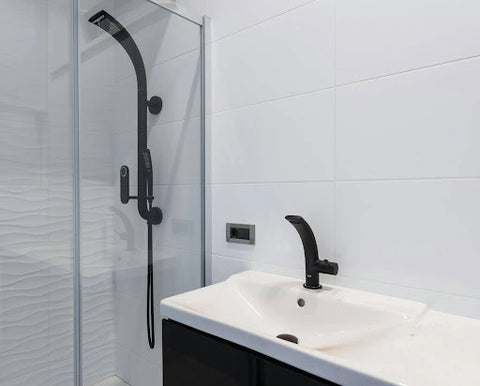
Popular Options For Bathroom Faucet Finishes
If you're new to selecting finishes, it's advisable to aim for consistency by matching the color of your faucet with other fixtures and accessories in your bathroom. While some finishes like chrome and most brushed-nickel varieties are standard, it's important to note that not all finishes look identical across different brands.
Pro tip: To guarantee consistency in the finish, opt for fixtures and accessories from the same manufacturer.
Now, let’s look at some popular options with their advantages, disadvantages, and style compatibility.
Polished Brass
A timeless choice, polished brass faucets lend a vintage charm to bathrooms.
Advantages: Easy to clean, durable, and readily available. Matches well with accessories and other fixtures.
Disadvantages: Slightly pricier compared to finishes like chrome and brushed nickel.
Compatible Styles: Versatile, fitting well in modern, traditional, and eclectic bathroom designs.
Satin Brass
A sophisticated take on brass, satin brass adds a touch of elegance with its brushed-gold appearance.
Advantages: Provides a subtle accent with durability. Matte finish hides fingerprints and water spots well.
Disadvantages: Less common and pricier. Matching accessories and fixtures can be challenging.
Compatible Styles: Ideal for traditional, modern, and contemporary bathroom designs.
Oil-Rubbed Bronze
Offering a traditional aesthetic, oil-rubbed bronze provides an alternative to standard chrome and brushed nickel finishes.
Budget-friendly Tip: If matching accessories is a concern, consider using a brass darkening solution to unify the hardware.
Advantages: Durable, readily available, and easy to clean. Matches well with accessories and other fixtures. Resistant to water spots and fingerprints.
Disadvantages: Slightly pricier compared to chrome and brushed nickel finishes.
Compatible Styles: Ideal for traditional, Tuscan, or Mediterranean-themed bathrooms.
Copper
With its distinctive and bold appearance, copper adds a rich ambiance to bathrooms, especially when paired with materials like marble.
Advantages: Possesses natural antibacterial properties and can ‘heal’ scratches over time by blending into the patina. Fairly accessible and develops a beautiful patina with age.
Disadvantages: Shiny copper may require more maintenance, but natural aging creates a beautiful patina. Matching accessories can be challenging, and it's not as durable as other finishes.
Compatible Styles: Ideal for Tuscan, farmhouse, and steampunk-inspired bathrooms.
Chrome
Chrome is a widely favored finish known for its versatility.
Advantages: Typically the most affordable option. Easy to clean, durable, readily available, and matches well with accessories and fixtures.
Disadvantages: Prone to showing water spots and fingerprints.
Compatible Styles: Suitable for nearly every style of bathroom.
Matte Black
Increasingly popular for its ability to complement various bathroom elements.
Advantages: Easy to clean, resistant to dirt, fingerprints, and water spots. Coordinates well with bathroom accessories.
Disadvantages: Challenging to match with other fixtures, less common, and pricier compared to popular finishes like chrome and brushed nickel.
Compatible Styles: Ideal for modern and eclectic bathroom designs.
Polished Nickel
A sleek alternative to chrome, polished nickel offers a darker tone with dynamic color variations in different lighting.
Advantages: Easy to maintain and durable. Provides a sophisticated alternative to brushed nickel.
Disadvantages: Slightly pricier and may be more challenging to find matching accessories or fixtures.
Compatible Styles: Versatile, fitting well in modern, contemporary, traditional, and eclectic bathroom designs.
Concluding Thoughts
When selecting a finish for bathroom faucets, it's important to consider both aesthetic preferences and practical factors. Each finish offers its own unique advantages and disadvantages, from affordability and durability to ease of maintenance and compatibility with accessories. By understanding these aspects and aligning them with your personal style and needs, you can make a confident choice that enhances the overall look and functionality of your bathroom space.
Check out: Selecting the best faucet supply lines for your bathroom or kitchen






